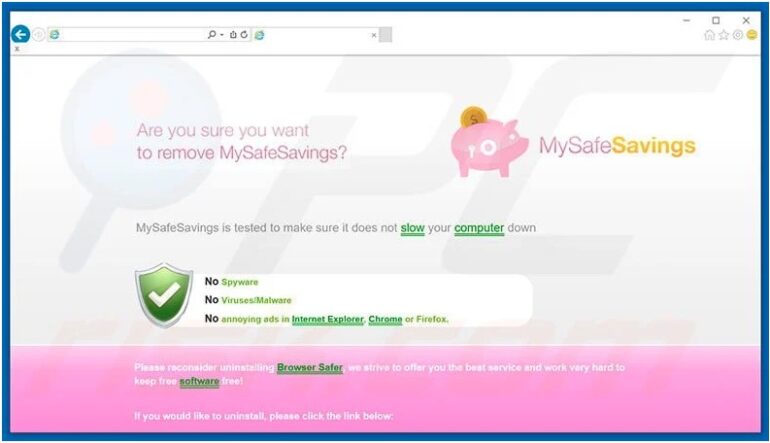The “Mysafesavings” virus is a recently emerged ransomware strain that primarily propagates through email-based attacks. Once it infiltrates a victim’s computer, it employs a malicious encryption process to lock the user’s data, rendering it inaccessible. Subsequently, the attackers demand a ransom payment from the victim in exchange for the decryption key necessary to unlock their files.
Key characteristics and implications of the Mysafesavings ransomware:
- Distribution through Email: Mysafesavings is typically disseminated via email attachments or links. Unsuspecting users may inadvertently download and execute the malicious payload, allowing the ransomware to take hold of their system.
- Data Encryption: Upon infection, the ransomware employs advanced encryption techniques to lock the victim’s files, making them unreadable. Common file types, such as documents, images, and videos, are among the targets.
- Ransom Demand: The attackers behind Mysafesavings then demand a ransom payment, usually in cryptocurrency like Bitcoin, from the victim. In return, they promise to provide the decryption key required to regain access to the encrypted data.
- Targeted Operating Systems: Mysafesavings appears to primarily target computers running Microsoft Windows 7 or 8 operating systems. These older systems may have vulnerabilities that the ransomware exploits.
- Detection and Removal: Detecting Mysafesavings requires a robust antivirus or anti-malware solution. Performing a complete system scan with up-to-date security software can help identify and remove the ransomware. It’s crucial to promptly address the infection to prevent further damage.
- Preventative Measures: To protect against ransomware attacks like Mysafesavings, users should exercise caution when opening email attachments or clicking on links, especially if the sender is unknown or the email appears suspicious. Regularly backing up data to an offline or cloud storage solution can also mitigate the impact of a ransomware attack.
- Security Updates: Keeping your operating system, software, and security tools up-to-date is essential, as many ransomware attacks exploit known vulnerabilities.
Table of Contents
How My Safe savings affects Computer?
After successfully infiltrating into the target computer, it will encrypt all of your files, then demand some ransom money in return for file decryption service. This virus will encode personal documents like documents, images (photos), videos, audios, and other important files on the infected PC.
When this ransomware hits the victim’s machine, it drops ransom named “How To Get Your Files Back.rtf” on desktop, which contains all the details of how victims can get back their files and payment info. It is usually being distributed through the attachment in an email. The sender generally uses the name of popular services like PayPal, UPS, FedEx to fool users, so they click on its malicious links.
Once it is successfully installed into the PC, it will scan the whole system. It also encrypts essential documents, including pdf, txt, docx, jpeg, png. It uses a robust encryption algorithm, AES-256.
Once encrypted, you won’t open your file without having a decryption key needed for decrypting data. Ransomware shows the message on the affected computer screen that demands a ransom fee of around $499 to $799 within the given time. Otherwise, you’ll lose access to your files permanently.

